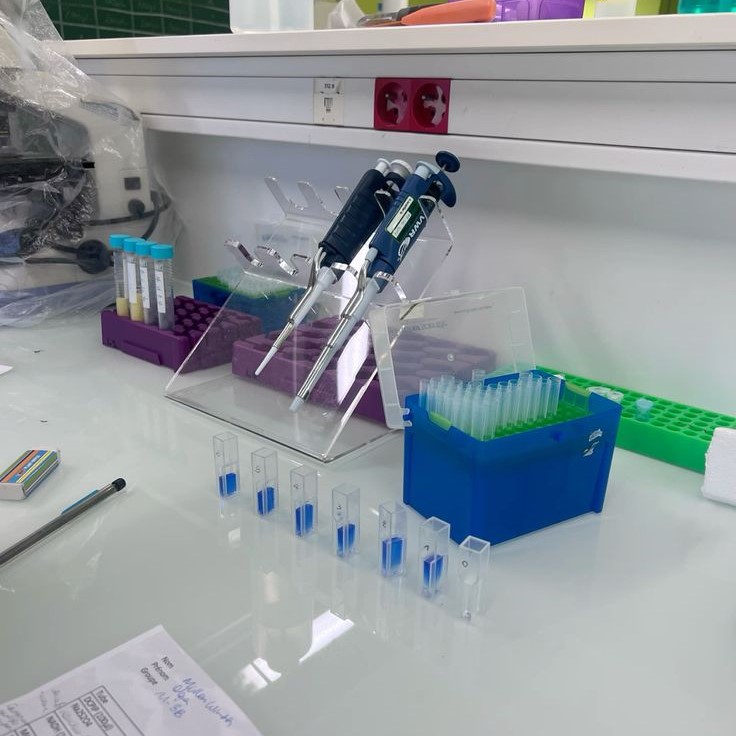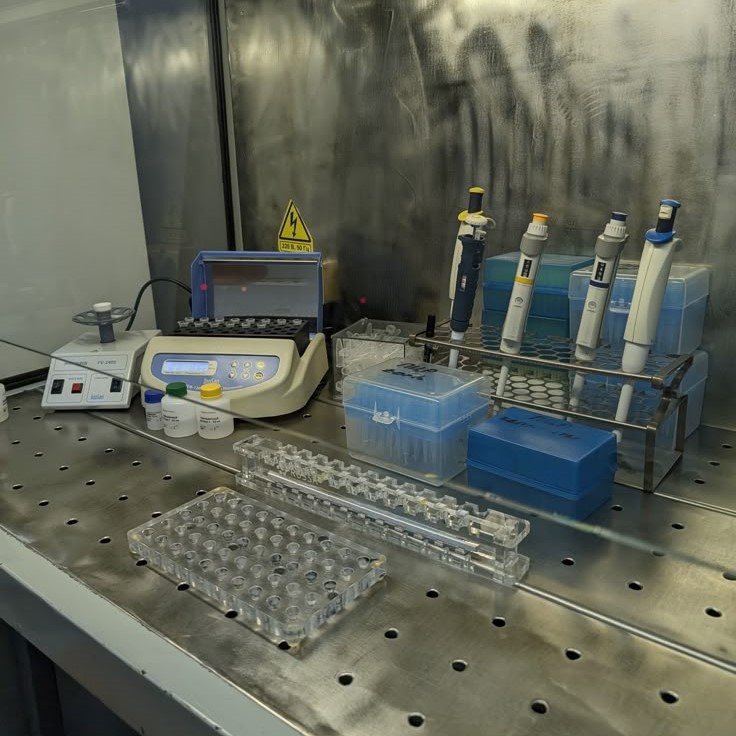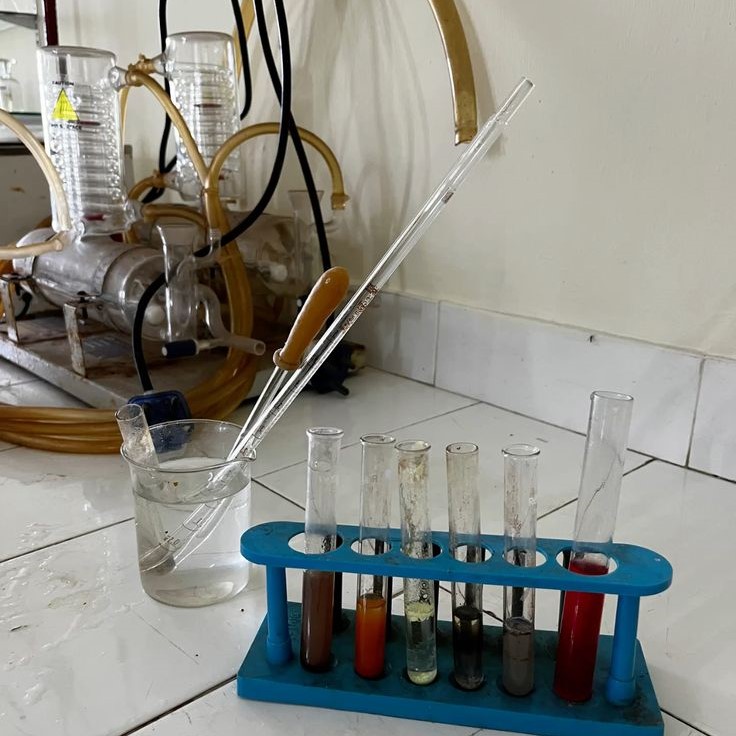Introduction
What is Genomic DNA Extraction?
Genomic DNA extraction is the process of isolating DNA from cells or tissues. This DNA holds the complete genetic information of an organism. Scientists use methods to break cells, remove contaminants, and purify DNA. The process ensures clean DNA for downstream applications in research and diagnostics.

Importance of Genomic DNA in Research
Genomic DNA extraction is crucial for studying genetic materials. Researchers use it to analyze genes and sequences. It helps in understanding diseases, plant traits, and evolutionary biology. High-quality genomic DNA is vital for accurate experimental results. Extracted DNA supports advancements in medicine, agriculture, and environmental science.
Key Principles of DNA Extraction
Understanding the principles of genomic DNA extraction is key to getting high-quality DNA. The process involves several steps aimed at isolating pure DNA for various applications. These steps ensure the DNA remains intact and free from contaminants.
Cell Disruption and Lysis
Cell disruption is the first step in extracting genomic DNA. Cells need to be broken to release their contents, including DNA. This can be done using physical, chemical, or enzymatic methods. Common approaches include grinding tissues or using detergents. For example, detergents break cell membranes, allowing DNA to escape. This step must ensure the DNA remains intact during cell lysis.
Removal of Proteins and Other Contaminants
After lysis, proteins and contaminants need to be removed. Proteins bind to DNA and can interfere with downstream applications. Enzymes like proteinase K can break down proteins. Organic solvents like phenol-chloroform also help separate proteins from DNA. Lipids and cellular debris are often removed by centrifugation. The goal here is to get rid of all impurities while retaining pure DNA.

DNA Purification Techniques
Purifying DNA ensures it is concentrated and free of inhibitors. Ethanol precipitation is a common method for DNA purification. Silica-based spin columns are also widely used for their efficiency. Magnetic bead-based techniques provide high purity and are fast. These methods capture DNA while washing away contaminants. Pure and clean genomic DNA is essential for reliable experimental results.
Common Methods
Genomic DNA extraction relies on different methods. These methods vary in efficiency, cost, and complexity. Each technique has unique advantages and is suited for specific applications. Below, we explore the most common approaches.
Organic Solvent-Based Extraction (Phenol-Chloroform Method)
The phenol-chloroform method is a traditional technique. It uses organic solvents to isolate DNA. After cell lysis, phenol and chloroform separate proteins and contaminants from DNA. Centrifugation helps create layers, with DNA in the aqueous layer. Ethanol is then used to precipitate the DNA. While effective, this method can be time-consuming and involve toxic chemicals. Proper lab safety precautions are essential.
Silica-Based Spin Column Method
Silica-based spin columns are highly popular for DNA extraction. In this method, DNA binds to silica membranes under specific conditions. After binding, impurities are washed away with ethanol-based solutions. Clean DNA is then eluted using a low-salt buffer or water. This approach is fast, safe, and produces high-quality DNA. It’s widely used in clinical and molecular biology labs due to its ease of use.
Magnetic Bead-Based Extraction
Magnetic bead-based extraction is a modern and efficient method. It uses magnetic beads coated with DNA-binding materials. DNA in a sample binds to the beads during the extraction process. A magnet is used to separate the beads, leaving contaminants behind. The purified DNA is eluted into a separate solution. This method is quick and scalable for high-throughput labs. It is often employed in automated systems.
Enzymatic Extraction Techniques
Enzymatic methods rely on enzymes to digest cell components and purify DNA. For example, proteinase K breaks down proteins, and RNase removes RNA. Detergents or buffers are commonly used alongside these enzymes. Enzymatic methods are gentle, preserving the integrity of the DNA. They work well with difficult samples like formalin-fixed tissues. However, the process can be slower and costlier.
These methods define modern genomic DNA extraction and serve various research and diagnostic purposes.

Factors to Consider During DNA Extraction
When extracting genomic DNA, several critical factors impact the success and quality of the procedure. These considerations ensure reliable results for research, diagnostics, and industry applications.
Sample Type and Preparation
The sample type plays a huge role in DNA extraction. Cells or tissues, including blood, plant material, or bacteria, differ in structure. Proper preparation ensures effective lysis and DNA release. For plant samples, grinding tissues helps break cell walls. Animal tissue may require enzymatic digestion to release DNA. Tailoring sample preparation to suit the material enhances yield and purity.
DNA Yield and Quality
High DNA yield and quality are critical for downstream applications. Yield refers to the amount of DNA obtained. Quality reflects the purity and integrity of the DNA. Low yield or poor quality can affect experiments like PCR or sequencing. Factors affecting this include the sample’s condition and the extraction method used. Using advanced purification techniques reduces contaminants and increases usable DNA.
Choosing the Right Extraction Method
Selecting the appropriate DNA extraction method matters greatly. Methods differ in efficiency, cost, and ease of use. Phenol-chloroform extraction works well for challenging samples but involves toxic chemicals. Silica-based spin columns offer convenience and high-quality results for routine work. Magnetic bead-based methods excel in automated, high-throughput labs. Understanding the application needs helps determine the best approach for optimal results.
Challenges in Genomic DNA Extraction
Genomic DNA extraction can face various challenges that affect the quality and yield of DNA. Understanding these issues helps researchers optimize the process and achieve better outcomes.
Contamination Risks
Contamination is a major challenge in genomic DNA extraction. It can compromise the purity of DNA. Common contaminants include proteins, RNA, and chemical residues. Impurities can hinder applications like PCR or sequencing. To reduce contamination, follow strict lab protocols. Use clean equipment and prepare reagents carefully. Employ methods like RNase treatment to remove RNA. Silica-based or magnetic bead methods help minimize contamination effectively.

Low Yield Issues
Low yield is another frequent problem in DNA extraction. Insufficient DNA affects downstream experiments. Several factors contribute to low yield, such as inadequate lysis of cells or incomplete DNA recovery. Using optimized buffers and lysis techniques can enhance yield. For example, enzymatic digestion can fully break cell walls. Proper sample preparation before extraction also ensures better results. Repeat extraction steps carefully to recover the maximum DNA amount.
Handling Difficult Samples
Some samples are challenging for DNA extraction. These include plant tissue, formalin-fixed materials, and degraded samples. Plant tissues contain polysaccharides and phenolic compounds that interfere with DNA purification. Specialized protocols, like CTAB-based methods, help overcome these issues. In formalin-fixed samples, cross-linked proteins make DNA extraction difficult. Protease treatments can help release DNA. For degraded or low-quality samples, magnetic bead methods often provide better recovery. Tailored approaches are essential for handling such tricky materials.
Applications of DNA Extraction
Genomic DNA extraction has diverse applications across many scientific fields. Purified DNA is essential for accurate and efficient analyses. Below are some key areas where genomic DNA extraction plays a critical role.
Clinical Diagnostics
Genomic DNA extraction is crucial in illness detection and personalized therapy. In genetic testing, extracted DNA helps identify mutations linked to diseases like cancer and inherited disorders. Techniques like PCR and sequencing rely on high-quality DNA for precise diagnosis. In infectious disease testing, genomic DNA aids in detecting pathogens. This contributes to early diagnosis and targeted treatments.
Molecular Biology Research
Research in molecular biology depends heavily on genomic DNA extraction. Scientists study DNA to understand gene functions and interactions. It supports applications like cloning, gene expression studies, and genome editing. High-quality DNA is vital for techniques like CRISPR and microarrays. DNA analysis helps unravel genetic pathways, advancing our knowledge of biology.
Agricultural and Environmental Studies
Genomic DNA extraction aids advancements in agriculture and environment conservation. In agriculture, it helps study plant traits like disease resistance and yield improvement. For breeding programs, extracted DNA enables genetic mapping and marker-assisted selection. In environmental science, DNA is vital for detecting and studying microbial diversity. Researchers monitor ecosystems and trace pollutants through extracted genetic material.
These applications highlight the importance of genomic DNA extraction in science and society. High-quality DNA is the foundation for breakthroughs in diagnostics, research, and ecological sustainability.
Tips for Optimal DNA Extraction
When performing genomic DNA extraction, following best practices ensures efficiency and high-quality results. Understanding the critical steps and applying proper techniques boosts DNA yield and purity.
Best Practices for Lab Protocols
- Prepare and Clean Equipment: Use sterilized tools and reagents to avoid contamination during extraction.
- Maintain Proper Temperature: Work in controlled environments to prevent DNA degradation due to heat or chemicals.
- Optimize Buffer Conditions: Use buffers suitable for your sample type to enhance lysis and DNA recovery.
- Handle Samples Carefully: Minimize physical stress on samples to preserve DNA integrity throughout the process.
- Follow Protocols Precisely: Implement step-by-step procedures to ensure consistency and reproducibility in results.
- Include Negative Controls: Negative controls detect contamination, ensuring the validity of your DNA extraction process.
Ensuring High-Quality DNA Samples
Verify DNA Integrity:
- Techniques to Use: Employ methods such as gel electrophoresis or spectrophotometry to assess DNA quality.
- Purpose of Testing: These techniques will confirm that the DNA is intact, meaning the strands are unbroken, and pure, indicating there are no contaminants present.
- Expected Outcomes: Successful verification will show clear results, such as distinct bands on a gel or specific absorbance readings, affirming the integrity of the DNA sample.
Avoid Chemical Residues:
- Contaminants to Watch For: Pay careful attention to the removal of common solvents and chemicals, including phenol, ethanol, and detergents.
- Purification Steps: Implement thorough washing and centrifugation steps during the purification process to ensure that no residues remain.
- Importance of Clean Samples: The presence of chemical residues can inhibit downstream applications, such as PCR or sequencing, leading to unreliable results.
Tailor Methods to Sample Type:
- Special Considerations: Recognize that different sample types, such as plant tissues or formalin-fixed specimens, may require specialized methods.
- Choosing Protocols: Select appropriate protocols that are designed to handle the unique characteristics and challenges posed by these difficult samples.
- Outcomes of Customization: Tailoring methods improves the likelihood of obtaining high-quality DNA from samples that may typically yield lower amounts or degraded DNA.
Use Modern Techniques:
- Advanced Isolation Methods: Opt for contemporary techniques like silica columns or magnetic beads for DNA isolation.
- Benefits of Modern Methods: These approaches provide cleaner and more efficient results, reducing the likelihood of contamination while speeding up the isolation process.
- Implementation: Integrate these technologies into your laboratory practices to enhance the overall efficiency of DNA extraction.
Store DNA Properly:
- Storage Conditions: Ensure the extracted DNA is stored at optimal temperatures, typically at -20°C or colder, and in suitable conditions to prevent degradation.
- Protection from Degradation: Consider the use of buffer solutions that can stabilize the DNA and minimize the risk of damage from environmental factors.
- Long-term Storage: Regularly assess storage practices to maintain the integrity of the DNA for future applications or research.
Periodic Skill Training:
- Staff Development: Provide training for laboratory staff on the latest protocols and techniques to keep skills up to date.
- Focus on Updates: Cover emerging technologies that may improve efficiencies and results in DNA analysis.
- Importance of Training: Regularly scheduled training sessions foster a culture of continuous improvement and ensure that staff are equipped with the knowledge to perform high-quality work.
By adhering to these tips, researchers can produce high-quality DNA for reliable downstream applications.

Future Trends in DNA Extraction Techniques
Advancements in genomic DNA extraction techniques continue to shape research and applications. Emerging methods promise greater efficiency, sustainability, and scalability. Two key areas driving innovation are automation and eco-friendly approaches.
Advances in Automation
Automation is revolutionizing genomic DNA extraction processes. Automated systems reduce human errors and improve reproducibility. These machines streamline workflows, increasing throughput and speed in laboratories. Robotic systems handle multiple samples efficiently, saving time during pipetting and centrifugation steps. Magnetic bead-based methods are commonly integrated into automated platforms for cleaner DNA isolation.
Software advancements make it easier to optimize extraction protocols. Precise control of parameters ensures consistent and high-quality DNA results. Automation is invaluable in high-throughput labs, clinical diagnostics, and genetic sequencing projects. It supports large-scale studies where manual processes are impractical.
Eco-Friendly Extraction Methods
Eco-friendly techniques focus on reducing environmental impacts of DNA extraction. Traditional methods often use hazardous chemicals like phenol and chloroform. Green alternatives aim to eliminate toxic substances while maintaining DNA quality.
Plant-based or biodegradable reagents are gaining popularity. These reduce chemical waste and improve lab safety. Solvent-free systems, such as silica or magnetic beads, contribute to cleaner processes. Efforts to minimize energy consumption also support eco-friendly extraction.
Researchers strive to create low-cost and sustainable kits for global accessibility. Eco-friendly DNA extraction helps labs adopt greener practices while achieving reliable results. This trend aligns with growing environmental responsibility in scientific research.
Conclusion: Embracing Effective Genomic DNA Extraction
In conclusion, genomic DNA extraction is a fundamental aspect of molecular biology. Understanding the various methods and adhering to best practices can significantly improve the outcomes of your experiments. Whether you choose organic, silica, or magnetic bead extraction methods, remember the importance of reagent quality and meticulous technique. By doing so, you can ensure high-quality genomic DNA for your research needs. Embrace the practices outlined in this article to enhance your laboratory skills and success in genomic DNA extraction.




